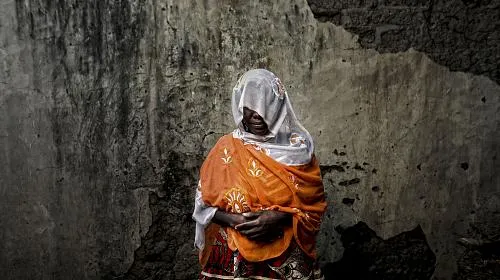OSLO, NORWAY (May 23, 2019) – CARE International will this morning challenge global leaders to commit long-term, predictable funding mechanisms for the protection of women from gender-based violence and abuse during crises and conflicts.
Welcoming delegates to the Ending Sexual and Gender-Based Violence in Humanitarian Crisisconference in Oslo, Norway, CARE’s Secretary General, Caroline Kende-Robb, will also highlight the problem of sexual exploitation and abuse by humanitarians, security forces and other actors in positions of power.
Kende-Robb is expected to tell the conference that:
“If impunity prevails, there will be little hope for survivors that violence will decrease. We believe in a survivor-centered approach where women and girls are at the center and are driving and shaping the response. Everything we do, particularly in the early stage of an emergency, either heightens exposure or helps mitigate risks of gender-based violence.
Yet we too often fail to prioritize the protection of those in need. Only about 4 percent of all humanitarian spending goes to protection activities and much less is spent on addressing gender-based violence. Conflicts and humanitarian crises trigger and exacerbate sexual and gender-based violence (SGBV) including rape, sexual slavery, trafficking, forced and early marriage, and intimate partner violence. Women and girls are disproportionately affected by these violations of international law, with severe consequences.
Studies show that, girls and women who experience violence are 1.5 times more likely to acquire HIV, are at increased risk of maternal mortality, and are less likely to complete their education. Violence against women and girls is estimated to cost economies between 1.2 percent and 3.7 percent of GDP.
Women and girls, and their groups, are vital actors and powerful agents of change in crises. Women convene assistance networks, coordinate response and assess humanitarian needs, including the risk of gender-based violence. Yet civil society groups working for gender equality still lack access to the resources they need to unlock their full power.”
At least 67 million women and girlswill require humanitarian assistance this year alone.Worryingly, more than a third of all women worldwide –or 35 percent –have experienced physical or sexual violence in their lifetime.
“Donors must increase funding for women’s organizations. Women and girls must be recognized and promoted as leaders and decision-makers in key humanitarian spaces and we must invest more in gender equality in humanitarian action,” says Kende-Robb.
Long-term, predictable funding for local women and girls’ rights is among the three key factors CARE and others are urging governments to deliver in order to promote gender equality. CARE International will also call on global leaders to address the sustained backlash against gender equality and women’s human rights as this is threatening some of the hard-won gains of the last two decades.
Other vital steps include ensuring more meaningful participation by women and girls in all decisions that impact their lives.
ABOUT CARE
Founded in 1945, CARE is a leading humanitarian organization fighting global poverty. CARE places special focus on working alongside poor girls and women because, equipped with the proper resources, they have the power to lift whole families and entire communities out of poverty. Last year, CARE worked in 94 countries and reached more than 80 million people around the world. To learn more, please visit: www.care.org.
MEDIA CONTACT
Henry Makiwa (based in London): makiwa@careinternational.org;Nicole Ellis: nicole.ellis@care.org; +1-202-560-1791

